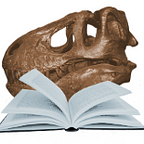Skeletonizing a coyote: Part 1
4 min readMar 21, 2021
I had the good fortune of encountering a roadkilled coyote during a trip across Ohio a few weeks ago. I used to regularly skeletonize specimens as part of building my personal natural history outreach collection, but it’s been awhile and I’m quite rusty. Here, I summarize some important points before writing some more detailed follow-up posts.
- Don’t wait to skin and gut. I gutted the specimen almost immediately thanks to the tolerance of the friends I was staying with, but I did not go ahead and skin it. You absolutely always want to skin right away too — The weather has been cycling between warm (above 60° F) and cold (below 29° F) for the past two weeks. This did not help the rate of decay at all. But in general, you don’t want to wait. The longer you wait in warmer weather, the more rapid decay and decomposition will set in and you will not be able to get a pelt/skin from the specimen. The longer you wait in colder weather, the more likely that the skin and top layer of flesh (and/or fat in the winter time) will end up drying out together and be tougher to skin. In my case, because of waiting, I ended up with a mix of both — the haunches were blood soaked from the fatal injury and the gutting process, so that area was badly decomposing and green, with the fur falling out, while the front half was dried and tough and hard to cut through.
- Use the right tools. In general, it’s best if you are carrying a scalpel with rounded blades (a 22) or an appropriate set of field-dressing knives for this process. The bigger the animal, the more helpful skinning and caping knives are. I couldn’t find my scalpel handles because they’d been packed up for so long, so I took a hunting knife and an assortment of smaller knives from the kitchen with different tips. It didn’t help. USE THE RIGHT TOOLS FOR THE JOB. Oh, and wear gloves, FFS.
- Are you dissecting this specimen or defleshing it? Dissecting means actually taking the time to study the anatomy, taking notes, etc. Defleshing means you are just getting as much non-bone material separated as possible to move as quickly as possible into the skeletonization process. The fresher your specimen (see #1) and with the right tools, especially scalpels (see #2), the easier this is. Otherwise, you need to just focus on getting this thing defleshed as quickly as possible. I like to have copies (photocopies…) of relevant papers when I’m dissecting, but I’ve done enough mammals that I don’t usually bother when I’m defleshing because I know my way around this process thanks to biology classes and experience.
- Respect the secret seven (sometimes eight). There are some key areas that when you’re defleshing and preparing for skeletonizing that you want to take good care with. Lee Post calls these his secret seven but I’d add an eighth that is especially important to recover for mammals if your specimen is a male and that’s the baculum. Out of the secret seven, the ones I feel are really tricky are:
A. The autopodia (his #4 and #7) — he just refers to this as the tarsals-metatarsals and the carpals-metacarpals, but in fact, you want to take great care during the skeletonization process to separate these out from the rest of the skeleton which can be treated a little more callously and take more care to observe, take notes, photograph, and generally treat these like gold, because they’re going to be an absolute pain to have to try to reassociate and rearticulate versus if you put them into their own little containers for dermestids or other insects, or focus on boiling the digits separately, etc.
B. The hyoid bones (his #2)— but I’d add the skull! Honestly, I try to keep the skull (crania, mandibles) and hyoid bones as well as the axis-atlas as one unit during the initial process. It’s much easier in my experience to deflesh around the connection of c1 and the back of the atlas and separate there. Then you can focus your energy on cutting the axis free from the back of the skull and defleshing the crania. Also, when I’ve wanted to actually dissect, this is usually the area I care more about. But anyway, respect the hyoid bones, because if you just chop them away, you’re losing an important part of the skeleton, and also if you let them just get overcooked, disarticulated away from the skeleton, it could be a pain to find them again. - Have a disposal plan. What are you going to do with the bits you aren’t keeping? Have a trash bag on-hand, make sure you can get to your wash station with a good strong soap — I am a big fan of Gojo or Lava for getting hands and arms clean before showering.
I’ll share more in the days/weeks to come, but these were just a few of my thoughts as I was scrubbing up…
/n
